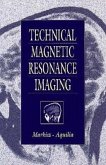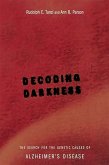Signal Processing for Neuroscientists introduces analysis techniques primarily aimed at neuroscientists and biomedical engineering students with a reasonable but modest background in mathematics, physics, and computer programming. The focus of this text is on what can be considered the golden trio in the signal processing field: averaging, Fourier analysis, and filtering. Techniques such as convolution, correlation, coherence, and wavelet analysis are considered in the context of time and frequency domain analysis. The whole spectrum of signal analysis is covered, ranging from data acquisition to data processing; and from the mathematical background of the analysis to the practical application of processing algorithms. Overall, the approach to the mathematics is informal with a focus on basic understanding of the methods and their interrelationships rather than detailed proofs or derivations. One of the principle goals is to provide the reader with the background required to understand the principles of commercially available analyses software, and to allow him/her to construct his/her own analysis tools in an environment such as MATLAB(r). * Multiple color illustrations are integrated in the text * Includes an introduction to biomedical signals, noise characteristics, and recording techniques * Basics and background for more advanced topics can be found in extensive notes and appendices * A Companion Website hosts the MATLAB scripts and several data files: http: //www.elsevierdirect.com/companion.jsp?ISBN=9780123708670"
Hinweis: Dieser Artikel kann nur an eine deutsche Lieferadresse ausgeliefert werden.
Hinweis: Dieser Artikel kann nur an eine deutsche Lieferadresse ausgeliefert werden.








